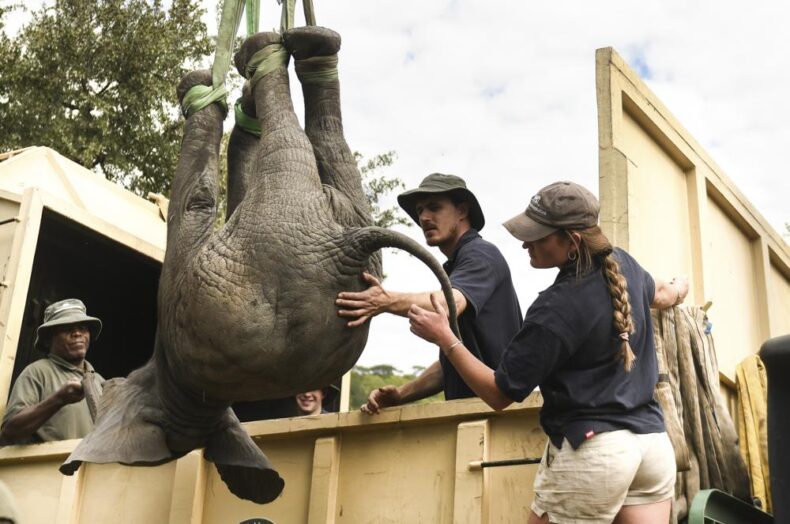Zimbabwe is moving 2,500 wild animals from its southern reserve to the ones in the country’s north. As the country faces intense drought conditions, the move comes to rescue the wild animals from droughts.
The damage from climatic change has replaced poaching as the biggest threat to wildlife.
Many animals will be taken in a convoy of trucks with the animals in metal cages. The trucks will complete a journey of 700 kilometres to transport the animals to their new home. In addition, crane hoists sedated elephants into trailers.

According to reports, 400 elephants, 70 giraffes, 2,000 impalas, 50 zebras, 10 lions, 50 buffaloes, 50 elands, and a pack of 10 wild dogs will be moved. These wild animals are moving from Zimbabwe’s Save Valley Conservancy to three conservancies, namely – Sapi, Matusadonha, and Chizarira.
Zimbabwe’s biggest animal translocation exercise in history.
For the first time in 60 years, Zimbabwe is conducting a massive internal movement of wildlife. The operation is called “Project Rewild Zambezi,” wherein the animals are moving nearby the Zambezi River Valley to rebuild the wildlife populations over there.
Previously, an operation this massive occurred between 1958 and 1964. “Operation Noah” relocated wildlife from rising water due to hydroelectric dam construction on the Zambezi River. Today, Lake Kariba is one of the largest man-made lakes in the world.
“We are doing this to relieve pressure. For years we have fought poaching and just as we are winning that war, climate change has emerged as the biggest threat to our wildlife.” expressed Tinashe Farawo.
A new home for wild animals to flourish and rewild.
Sapi Reserve will be one of the new homes for the wild animals moved from Zimbabwe. Sapi is a private reserve and part of the UNESCO World Heritage, located east of Mana Pools. Recently, Sapi was converted into an exclusive tourism and conservation private reserve. Furthermore, it is operated by Great Plains Conservation, NGO dedicated to conserving natural habitats in Africa.













